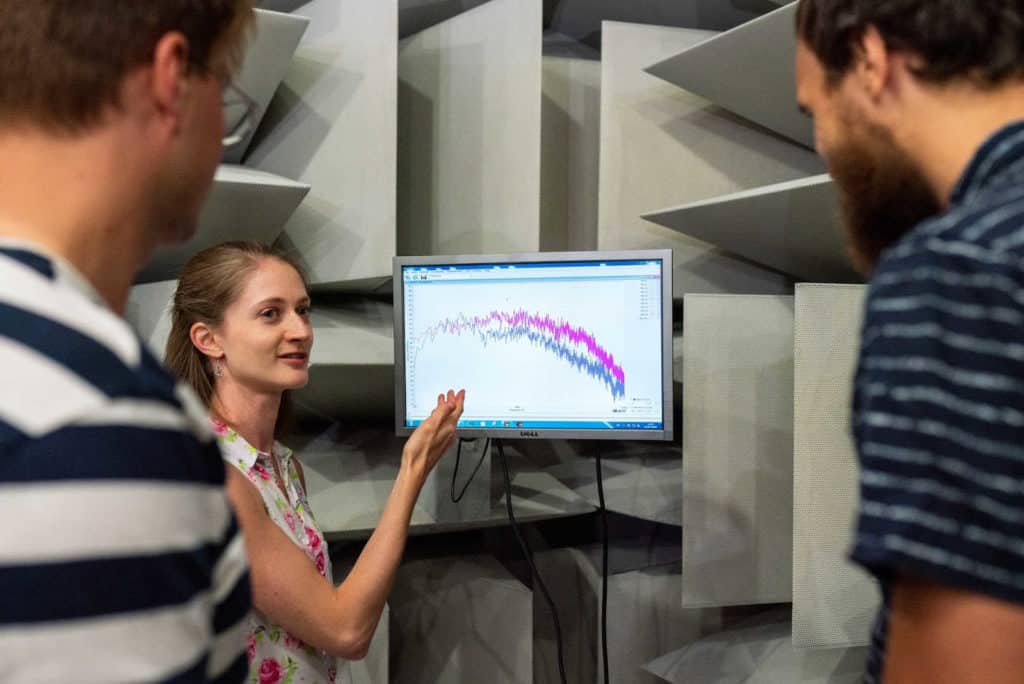Leading corporations like Starbucks and Apple understand the value of listening to their customers. Market research helps these companies continue to bring new products to the market, grow and outperform their competitors. While quantitative research is valuable, digging into human motivations requires more in-depth analysis than surveys and statistics can offer. Qualitative research transcription helps companies see a more complete picture of their customers’ preferences and opinions.
Table of Contents:
- What is transcription in qualitative research?
- What is the transcription process in qualitative research?
- How to validate the accuracy of transcription in qualitative research
- How to use data transcription in qualitative research
- Benefits of Verbit’s Transcription Solution for Qualitative Research
Although qualitative data can be more challenging to analyze, it’s a vital aspect of market research. Plus, it’s easier to use with the aid of accurate qualitative research transcription services. Verbit is partnering with companies around the world to offer them easy-to-use solutions for these transcription efforts.
What is transcription in qualitative research?
Qualitative research occurs in many formats. Transcription solutions preserve research information as it’s gathered in different ways. Here are some popular and useful ways companies are gathering data and can benefit from transcribing it.
One-on-one interviews
Interviews can shed light on a person’s motivation for choosing a particular product or service. The interviewer may come to the table with specific questions but follow any interesting lines of questioning based on the responses they get. While a simple interview might follow a script, the best ones can cover topics the interviewer didn’t know they should’ve been asking.
The variety of potential answers is one reason transcription in qualitative research is so important. The valuable data comes in unique forms and researchers must preserve it accurately so that analysts can review it later and come to conclusions.
Focus groups
Traditional focus groups take place in person. The researcher will place several people in a room and record what they say while also analyzing their physical reactions. When it comes to transcribing what the focus group members say, it’s important that the finished transcript identifies the speakers to gather accurate demographic information related to the feedback.

Online focus groups
Like many aspects of modern life, focus groups are moving online. Traditional focus groups are still important tools, but online options present flexibility and are often more cost-effective. Transcribing these group conversations also involves identifying speakers. Fortunately, Verbit’s transcription solution integrates with popular video conferencing platforms like Zoom to make this process simple.
Co-creation sessions
Sometimes customers or employees come up with new ideas together. Involving customers in the process is a good way to get a sense of what they really want while building brand loyalty. In a co-creation session, the customer may interact with the product while receiving encouragement to identify pain points, flaws or potential areas of improvement. This type of research is important as it can help manufacturers as they develop products to include alterations to make them better. It’s critical that the transcripts of these sessions accurately capture the feedback, as the insights can potentially reshape an entire product’s design.
Shop-alongs
During a shop-along, the researcher will observe the way that consumers interact with their products in a shopping setting. This research is helpful for gauging how well the in-store display, packaging and marketing is performing compared with the competition. Since researchers often question subjects about how and why they made their decisions, transcription of these conversations can be helpful for analysts working with the data.
What is the transcription process in qualitative research?
The process for transcription in qualitative research may look different depending on the methods the researchers choose. In some cases, researchers may record audio or video files to capture the sound and body language of the participants. Then, after the session, they would either transcribe the audio into a text version. Although it might be possible to transcribe the audio in-house, it can be incredibly time-consuming for non-professional transcribers.
There are other types of transcription in qualitative research that are faster and more accurate. One option is to hire a transcriber who either captures the audio and transcribes it in real-time or by using the audio file. Outsourcing this task is often far more efficient and scalable when working on multiple projects or with multiple individuals.
Increasingly, people are relying on automatic speech recognition (ASR) or qualitative research transcription software to complete transcripts. Unfortunately, this automated process often leads to inaccuracies and can even cause the results to be unintelligible.
Verbit offers an intelligent solution for researchers to consider as it uses a combination of AI-based technology and professional human transcribers to provide fast, accurate transcriptions.
How to validate the accuracy of transcription in qualitative research
As noted, using just software to transcribe video and audio content can lead to highly inaccurate transcripts. Without accuracy, transcripts might become useless, effectively wasting corporations’ efforts to conduct qualitative research. When it comes to automated transcription, measuring accuracy involves a system called the word error rate (WER).
WER counts the number of errors as a matter of three categories, substitutions, deletions and insertions. Substitutions occur when the software replaces one word with another. Deletions involve leaving a word out, and insertions occur when the software adds a word that’s not in the audio. The next step is to divide the total number of errors by the total number of words. For instance, if the sentence had ten words and three errors, the WER would be .3.
ASR is improving and leading to some lower WER scores. However, when the audio is imperfect, contains niche terminology, or the speakers have accents, the errors increase. In real-world research scenarios, this is important to consider.
Verbit’s AI works to combat errors related to niche terminology, accents and other complications by continuing to learn and adapt. Users can also upload industry-specific terms they intend to use as a way to prepare the system and transcribers to identify those words or phrases. Adding a human layer means that Verbit can provide up to 99% targeted accuracy for transcripts.

How to use data transcription in qualitative research
The transcripts of qualitative data make the information much more manageable. Finding patterns in the data, organizing it and using it to create a narrative becomes much easier with this tool. Additionally, searchable transcripts provide a time-saving resource that makes research far simpler.
For instance, researchers often need to pull up a particular video or audio recording or part of one. With Verbit, they can search key terms they want to recall or reference and quickly locate that spot in the transcript and the original audio or video. Interactive transcripts are also good for creating word clouds and other data analyses that can help researchers review their results.
Benefits of Verbit’s Transcription Solution for Qualitative Research
Verbit’s transcription solution can support qualitative research by making the process easier and more efficient. Here are a few key benefits of partnering with Verbit for transcription services for qualitative research.
Accuracy and industry-specific options
Verbit’s transcriptions can provide up to 99% targeted accuracy. When researchers cover industry-specific topics and use niche language, Verbit’s hybrid method or professional transcribers can deliver accuracy in a way that automatic transcription tools alone cannot. For instance, Verbit has specific versions of its solutions for specific industries. As a result, the software and the transcribers can prepare to capture verbatim transcription in qualitative research settings accurately.
Additionally, Verbit offers the option of uploading terms and names before a recording session. By using this feature, researchers can prepare the transcribers so that they know how to spell names or identify terms of art correctly.
Privacy and security
Verbit is an essential partner to members of the financial, legal and other industries that require robust security. To accommodate partners who are transcribing confidential information, Verbit complies with SOC 2. Researchers who want to keep the information in their transcripts confidential can count on Verbit to meet their security needs.
Efficiency
Partnering with Verbit allows researchers to focus on their work while quickly and efficiently producing the transcripts they need. Researchers don’t need to focus on note taking to get live transcription and real-time records of their interviews or focus groups. In cases where a company has a large number of recordings they need to transcribe, Verbit provides a scalable solution with rapid turnaround times.

Searchability
Researchers using Verbit for transcripts can specify their formatting preferences. Flexible options mean that teams can find the best format to meet their needs or use cases. Verbit’s searchability means that researchers can quickly locate any information they’re looking for by typing in the relevant terms. The search will find the matching words in the transcript and the associated audio or video recording. Not only is it easy to find the text version, but this makes finding a particular interview or point in a video simple as well.
Convenience and availability
Some research institutions find that booking a transcription service or producing transcripts in house can be a hassle. Stenographers are often in short supply, making it difficult and stressful to find quality transcription options. For example, Rose Li and Associates (RLA) supports research efforts for government agencies, universities and large biotech and pharmaceutical companies like Eli Lilly & Co and Lockheed Martin. RLI was struggling to find reliable, accurate transcription services to meet its growing needs. By partnering with Verbit, RLI saved time and avoided scheduling issues while being able to meet sophisticated scientific transcription needs.
Partnering with Verbit for qualitative data research transcription offers significant benefits to research organizations. As a provider of accessibility solutions, Verbit also supports video captioning, audio description and translation needs of corporations and other institutions worldwide. Contact Verbit to learn more about how we can help your research and accessibility efforts.




